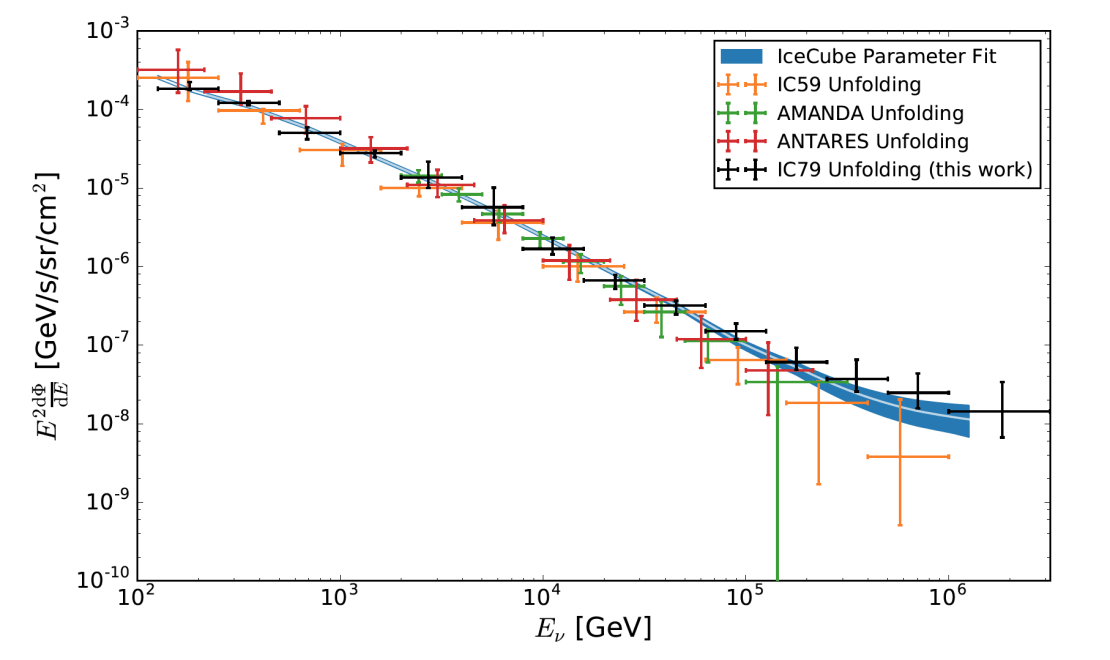The astrophysical neutrino flux observed by IceCube has been the focus of many studies, by both the IceCube Collaboration and other scientists around the world. The collaboration announces today a new study that finds an excess of muon neutrinos at energies above 126 TeV, which is compatible with recent measurements of the astrophysical neutrino flux and constitutes the first model-independent measurement of this flux. These results have been submitted recently to the European Physical Journal C.

The muon neutrino flux has two main components: atmospheric neutrinos, created by cosmic ray showers in the atmosphere, and extraterrestrial neutrinos, also called astrophysical neutrinos. Most searches are based on models using specific values for the spectral shape of each component that feed Monte Carlo simulations, which are later compared to data.
However, this energy spectrum can also be extracted from experimental data using less strict assumptions of the cosmic ray composition or any spectral shape, which allows the direct comparison of data and theoretical predictions. To do that, one needs to compute the energy spectrum of the incoming muon neutrinos from the energy spectrum of the reconstructed muons—created by the interaction of neutrinos with the ice—which usually produce tracks only partially contained in the detector. This the so-called unfolding process.
IceCube researchers have performed this unfolding using one year of data taken with the IC79 configuration, i.e., the last year before the completion of the detector. The unfolded spectrum covers an energy range from 125 GeV to 3.2 PeV, extending IceCube’s reach by a factor of 3 compared to previous studies using smaller instrumented volumes—IC40 and IC59.

The IC79 unfolded spectrum shows good compatibility with theoretical predictions for a purely atmospheric composition up to about 126 TeV. However, for the first time, at higher energies this unfolded spectrum shows an excess with respect to the atmospheric-only predictions and is in good agreement with recent measurements of the astrophysical neutrino flux. Earlier IC40 and IC59 unfolded measurements had not found any hint of a nonatmospheric component, which can be explained by the lower maximum energy and larger uncertainties of those analyses.
The flattening observed above 126 TeV follows the trend observed in other measurements of the astrophysical flux with IceCube. When comparing the unfolded muon neutrino spectrum to theoretical predictions for the atmospheric neutrino flux, the excess in the energy range between 126 TeV and 1.8 PeV is up to 2.8 sigma. The exact value of the significance depends on the theoretical framework used to describe the atmospheric neutrino flux and interactions. At higher energies, the significance is reduced due to larger uncertainties.
+ info “Measurement of the νμ energy spectrum with IceCube-79,” The IceCube Collaboration: M. G. Aartsen et al., European Physical Journal C77 (2017) 692, arxiv.org/abs/1705.07780